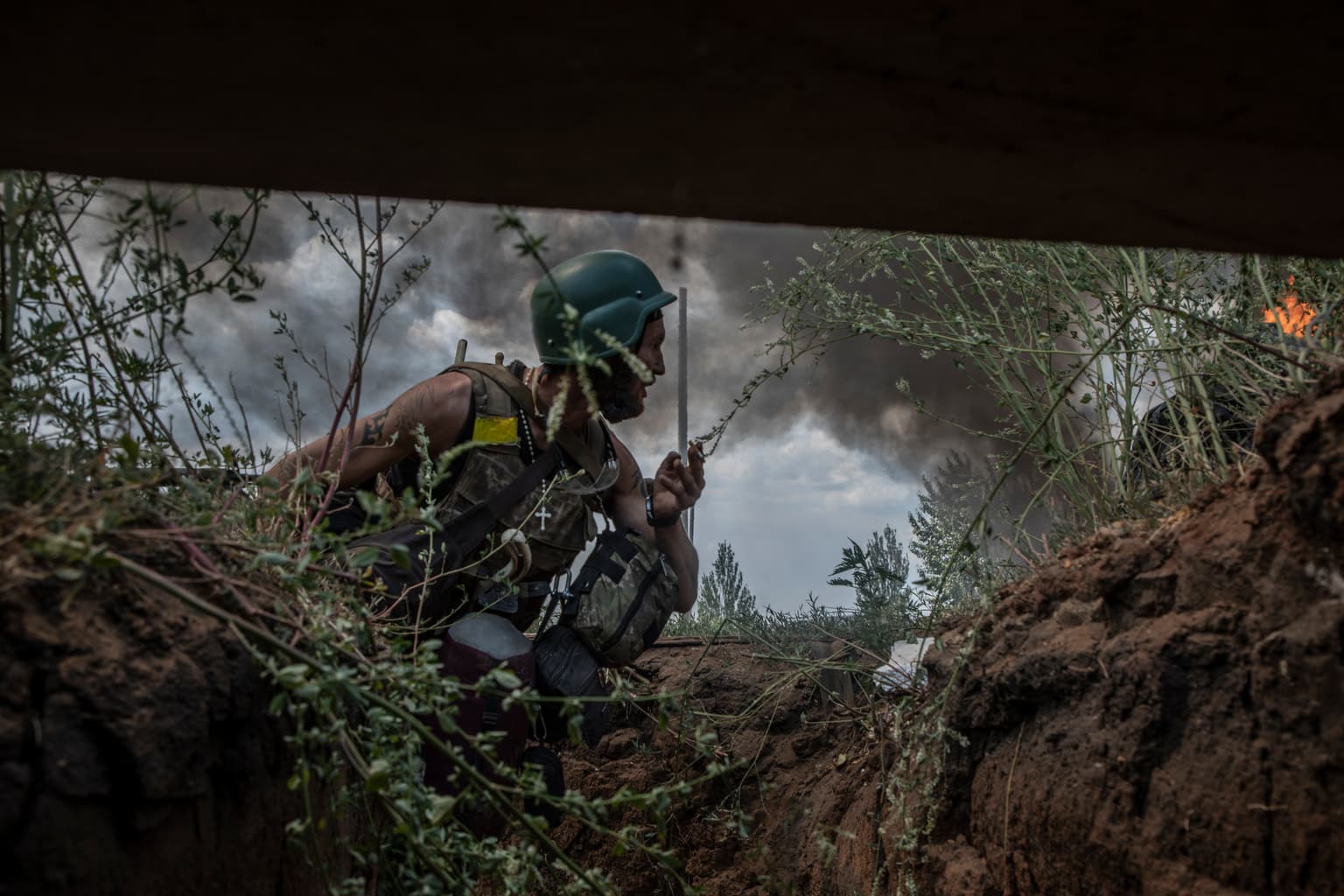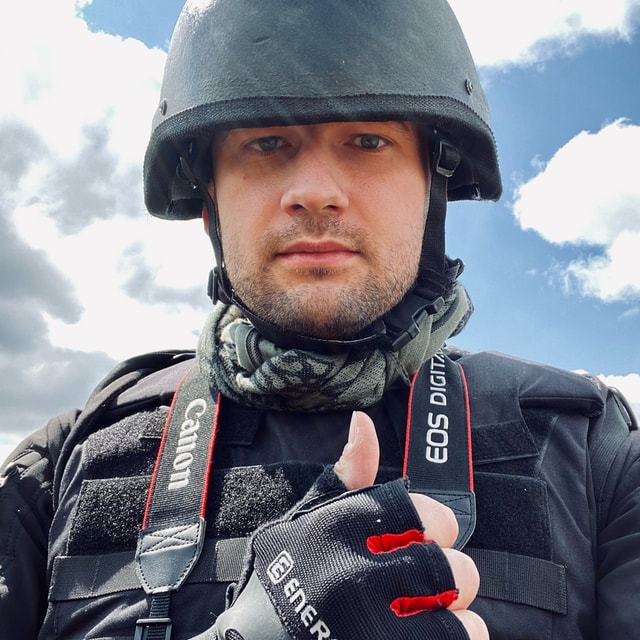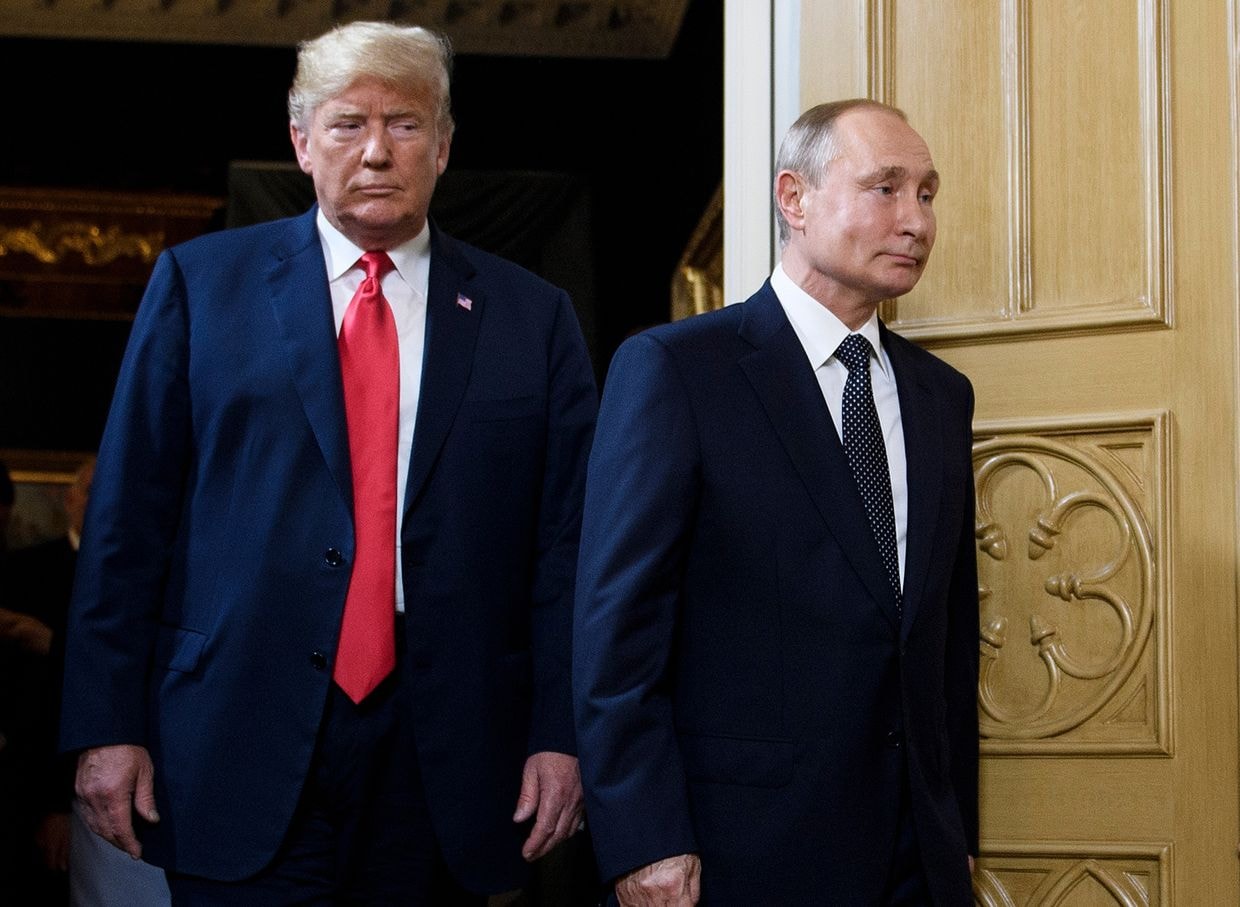What would a Ukrainian counter-offensive in Kherson look like?

One way or another, according to Ukraine’s leadership, it's bound to happen.
Even though the Battle of Donbas is far from over, Ukraine is expected to open the next chapter of the war sometime in the near future — a highly anticipated, major counter-offensive operation in the south, particularly to liberate the Russian-occupied city of Kherson.
Kyiv has declared its intentions to liberate the only regional capital captured by Russia following the Feb. 24 full-scale invasion.
Experts across the world agree that retaking Kherson is the most feasible way for Ukraine to score a major victory over Russia and turn the tide of the war. As part of a counter-offensive operation, Ukraine would likely seek to block the occupied city, cut the Russian garrison off from supplies and reinforcements, and hold the blockade until Russia surrenders.
This would be a daring mission, demanding the most effective contribution of all components ranging from infantry to air defense and counter-battery activity.
Thanks to local terrain and Russian military flaws, Ukraine's plan may in fact be realistic.
But in order to carry it out, Ukraine's military would have to demonstrate excellent coordination of war power and do the difficult work of clearing the area of Russian forces, supply lines, and ammunition depots — before going in.
Rush to the south
Ukraine lost Kherson as early as March 2, amid little armed resistance, as Ukraine’s defenses in the south quickly collapsed to Russia’s heavy blitz.
Now, after over 140 days of war, Russia claims Kherson Oblast is “full-fledged Russian territory,” and is threatening to stage a “referendum," thereby annexing yet another Ukrainian region like it did with Crimea in 2014.
According to Ukraine’s Defense Minister Oleksiy Reznikov, President Volodymyr Zelensky has already charged the military with a mission to establish a plan to de-occupy Ukraine’s south, as its seaside regions are vital to the national economy.
Ukraine has already launched campaigns in Kherson Oblast as a counterweight to Russia’s large-scale offensive in Donbas. As a result, Ukraine has liberated a total of 44 villages and towns, according to Ukraine’s local military-civilian administration in Kherson Oblast.
Read also: Ukraine targets Russia’s ammunition depots, undermining its artillery advantage
But these campaigns don’t have much to show for themselves. Among experts polled by the Kyiv Independent, these Ukrainian operations carried out by small groups were more attempts to probe Russian defenses and keep Russian forces away from Donbas rather than operations to make substantial territorial gains.

As of now, the 200-kilometer-long Kherson frontline bordering Mykolaiv Oblast is being held by considerably depleted parts of Russia’s 49th Combined Arms Army, including elite airborne units, the 22nd Army Corps, and units with Rosgvardiya.
According to estimates, Russia may have deployed at least over 10 battalion tactical groups (BTGs) to the area.
This is likely Russia’s least saturated front-line sector since Russia has given the top priority to hostilities in Donbas, where it has deployed nearly 50 BTGs within the most crucial zone between Izium and Bakhmut.
Nonetheless, Russia is beefing up its defenses in the south as Kherson becomes an increasingly obvious target for a Ukrainian counter-strike beyond Donbas. On July 12, social media users and local media in occupied Melitopol posted videos showing “an endless” Russian military column moving towards Kherson.
Recently, open-source monitors have also indicated a growing number of poorly-trained troops mobilized in occupied Donbas and deployed to Kherson, which may indicate an ongoing lack of manpower.
This is one of the favoring factors behind a potential Ukrainian counter-offensive.
“Russians are not capable of completely securing the whole duration of the giant frontline in Kherson,” said Kirill Mikhailov of the Conflict Intelligence Team (CIT), an open-source investigative project.
“They can’t have a wholesome line of trenches. The best they can have is strong points in certain populated areas or road junctions. In many cases, they will not be able to coordinate their actions. And Ukraine will have the opportunity of picking them off one by one.”
“Nor is Russia capable of sending quick reinforcements to the area, as they would have to drastically reduce or even abandon their offensive in Donbas.”
The Kherson frontline, distinct from concentrated Donbas, is rather loose and porous, which would allow Ukrainian advance parties to break through it.
“I will not be surprised if it turns out that Ukrainian scout groups infiltrate the Russian-held zone to probe their defenses and see how deep it is possible to go,” said Igal Levin, a Ukraine-born Israeli defense expert.
“Ukrainian infantry has so far been good at carrying out operations in smaller units.”
Read also: How Western heavy weaponry can make a difference in the war in Ukraine
Advancing Ukrainians should avoid over-concentrating and move forward as company-based units saturated with man-portable anti-aircraft systems to work against Russian close support aircraft, Levin believes.
When the time comes, Ukrainian ground units could try to advance some 20-30 kilometers south, closer to Kherson’s outskirts, particularly the ill-fated Chornobaivka airfield used by the Russian Air Force.
Over four months of war, the airfield became the scene of dozens of devastating Ukrainian attacks, in which scores of Russian aircraft and hardware were destroyed. Nonetheless, due to its strategic importance, the Russian military refused to leave it despite constant losses.
Key targets
There are three key objectives Ukraine has to meet in order to encircle Russian troops and force them to surrender in Kherson.
Ukraine would have to impose firm control over the M14/P47 highway that runs east of Kherson and connects the city with Nova Kakhovka, one of Russia’s key bases in Ukraine’s southern Kherson Oblast and the site of recent attacks on Russian ammunition depots carried out with the help of newly delivered Western weapons.
It would also need to destroy two bridges across the Dnipro River, the Antonivsky Bridges, one for vehicle traffic and the other for railway, close to the town of Antonivka on the outskirts of Kherson. The two bridges currently allow Russia to reinforce its garrison in Kherson from occupied territory across the river.
Ukraine would also have to cut off the Kakhovska Hydroelectric Power Plant in Nova Kakhovka some 55 kilometers east of Kherson. The dam also serves as a bridge, along which the M14/P47 highway runs.

If the highway is cut off by Ukraine, Russian forces would have no way of getting across the Dnipro. With the two Antonivksy bridges destroyed, the only other way to make it across the Dnipro’s right bank is in Ukrainian-controlled Zaporizhzhia over 200 kilometers away from Kherson.
This first phase would only be considered successful once Russian forces are blocked and cut off from supplies and reinforcements.
If successful, Russian forces in Kherson would be backed up against a giant natural obstacle. The Dnipro River is nearly 350 meters wide near the city. Ukrainian artillery would also be close enough to prevent Russian forces from installing any sort of river cross, such as floating bridges.
Read also: 'Welcome to hell': Ukrainian airborne fighting Russia in Donbas woods
The hard blockade would take time, experts said.
But this scenario has the chance of inflicting the least amount of damage on Kherson, unlike what Russian forces did in their siege of Mariupol.
During the siege, Russian forces managed to isolate the city, with little hope for the Ukrainian garrison, but then desolated and stormed the city in a bid to gain a quick victory.
Preparations
In the event Ukraine manages to encircle Russian troops in Kherson, Ukraine would also have to make fast and firm territorial gains.
Moreover, it will have to hold on to what it gets amid Russian counter-attacks.
Ukraine would have to wipe out a lot of Russian military infrastructure, such as ammunition and fuel dumps, weakening Russia's ability to fight.
The local terrain opens up opportunities for Ukraine. Due to the lack of roads in the oblast and few bridges across the Dnipro River, Russian logistics are slower in Kherson. And transportation bottlenecks force Russian forces to keep their supplies concentrated in a few locations near train stations.
These saturated areas are juicy targets for High Mobility Artillery Rocket Systems, or HIMARS, recently provided by the U.S. to Ukraine. One example was the attack on a giant munitions dump in Nova Kakhovka on July 11.
Kherson Oblast has been the focus of an ongoing strike campaign that has destroyed close to 50 key facilities of Russia's military over the last few weeks.
And, according to CIT’s Kirill Mikhailov, the more military power Russia is deploying to Kherson, the more problematic its logistics inevitably becomes due to the local terrain. Russia's logistical stretch in Kherson is the longest out any others in its war in Ukraine.
Russia’s military would also undoubtedly try to counterattack in the air and on the ground.
Experts believe it is extremely important that Ukraine inflict as much damage as possible to Russia’s air defense, and, at the same time, build up a strong and multilayered air defense grid against Russia.
Should Russian S-300s, S-400s, Tor-Ms, and Buk-Ms air defense systems be largely suppressed — particularly by the HIMARS which have already proved capable of destroying S-400s in occupied Luhansk on July 13 — Ukrainian Bayraktar TB2 drones would have a green light to strike.
The Ukrainian drones would be able to ensure quick target detection so that HIMARS and MLRS systems can strike and destroy Russian convoys on the run. Besides, a strong air defense would be necessary against Russian aviation based in large numbers in occupied Crimea.
In general, a successful operation of this kind would require several fully equipped and strong infantry brigades enjoying very strong air cover and strong counter-battery capabilities against Russian tubed and rocket artillery.
“It’s a problem,” said CIT’s Mikhailov.
“But it’s a problem that can be solved, especially when it comes to just one frontline section.”
______________________________________________
Note from the author:
Hello! My name is Illia Ponomarenko, the guy who wrote this piece for you.
I hope you found it useful and interesting. I work day and night to bring you quality stories from Ukraine, where Russia is waging the biggest war in Europe since WWII. My little homeland, Donbas, is now the site of the worst fighting. We are helping to keep the world informed about Russian aggression. But I also need help from every one of you — to support Ukrainian wartime journalism by donating to the Kyiv Independent and becoming our patron.
Together, we can help bring peace to Ukraine.









